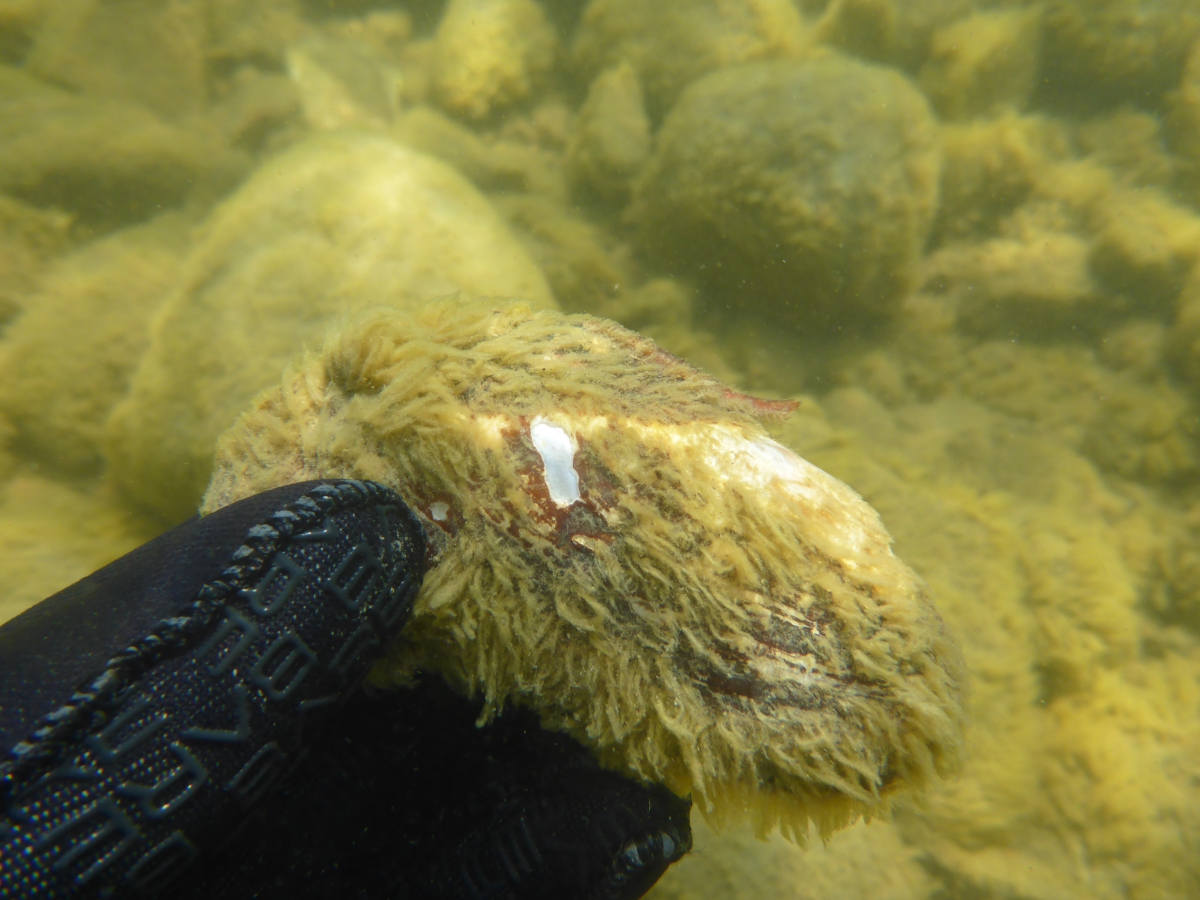Rocky Mountain Ridged Mussel
Seventy percent of North American fresh water mussel species are at risk of becoming extinct. In Canada, the Rocky Mountain Ridged Mussel is a freshwater mussel (or bivalve) that is only found in the Okanagan Valley of British Columbia. It is currently listed as Special Concern under Species at Risk Act (SARA) and the Committee on the Status of Endangered Wildlife in Canada (COSEWIC) has recommended it be up-listed to Endangered (2010).
Native freshwater mussels are integral components of our natural and cultural heritage. They filter out water pollution, are closely linked to the health of fish populations and are important prey for many other animals. They are a long-lived species and good indicators of ecosystem health, and one of the most endangered groups of animals on earth. Native mussels, such as the Rocky Mountain Ridged Mussel live among the gravel and sediment along lake shorelines and river or stream bottoms (invasive zebra/quagga mussels, in contrast, are small and grow in dense clumps on pilings, boats and rocks).
 The Rocky Mountain Ridged Mussel can be distinguished by its trapezoidal shape and prominent ridge that runs along the top of the shell. The shell is dark brown to black with white or salmon coloured nacre or inner shell. Mussels have tooth-like structures along the hinge of their shells and the Rocky Mountain Ridged Mussel has “teeth” that are small and compressed.
The Rocky Mountain Ridged Mussel can be distinguished by its trapezoidal shape and prominent ridge that runs along the top of the shell. The shell is dark brown to black with white or salmon coloured nacre or inner shell. Mussels have tooth-like structures along the hinge of their shells and the Rocky Mountain Ridged Mussel has “teeth” that are small and compressed.
A number of partners have come together to help the Rocky Mountain Ridged Mussel. Since being identified as a species at risk, the Province along with the Okanagan Nation Alliance, the Department of Fisheries and Oceans Canada, and the University of British Columbia Okanagan Campus have been working to increase our knowledge of this species as well as improving our management practices.
Some of the work that has been completed to assist in the protection of the Rocky Mountain Ridged Mussel includes:
- establishing reproductive timing which has been used to form sensitive timing windows for works in the lake;
- surveying much of the shoreline in the valley;
- developing a habitat model for the species;
- providing guidance on the detection and relocation of the species;
- assessing the risk of managing for aquatic invasive plants;
- providing outreach in the form of interpretive signage;
- determining preliminary host fish and juvenile habitat; and
- evaluating the age class structure for the species present in Okanagan Lake.
HOW YOU CAN HELP?
You can help Rocky Mountain Ridged Mussels by not picking them up or disturbing them.
You can also keep their water clean by reducing your use of fertilizers and by not putting chemicals down the drain. Did you know that mussels are filter feeders? One mussel can filter up to 40 liters of water in one day. That’s equivalent to 160 glasses of water!
